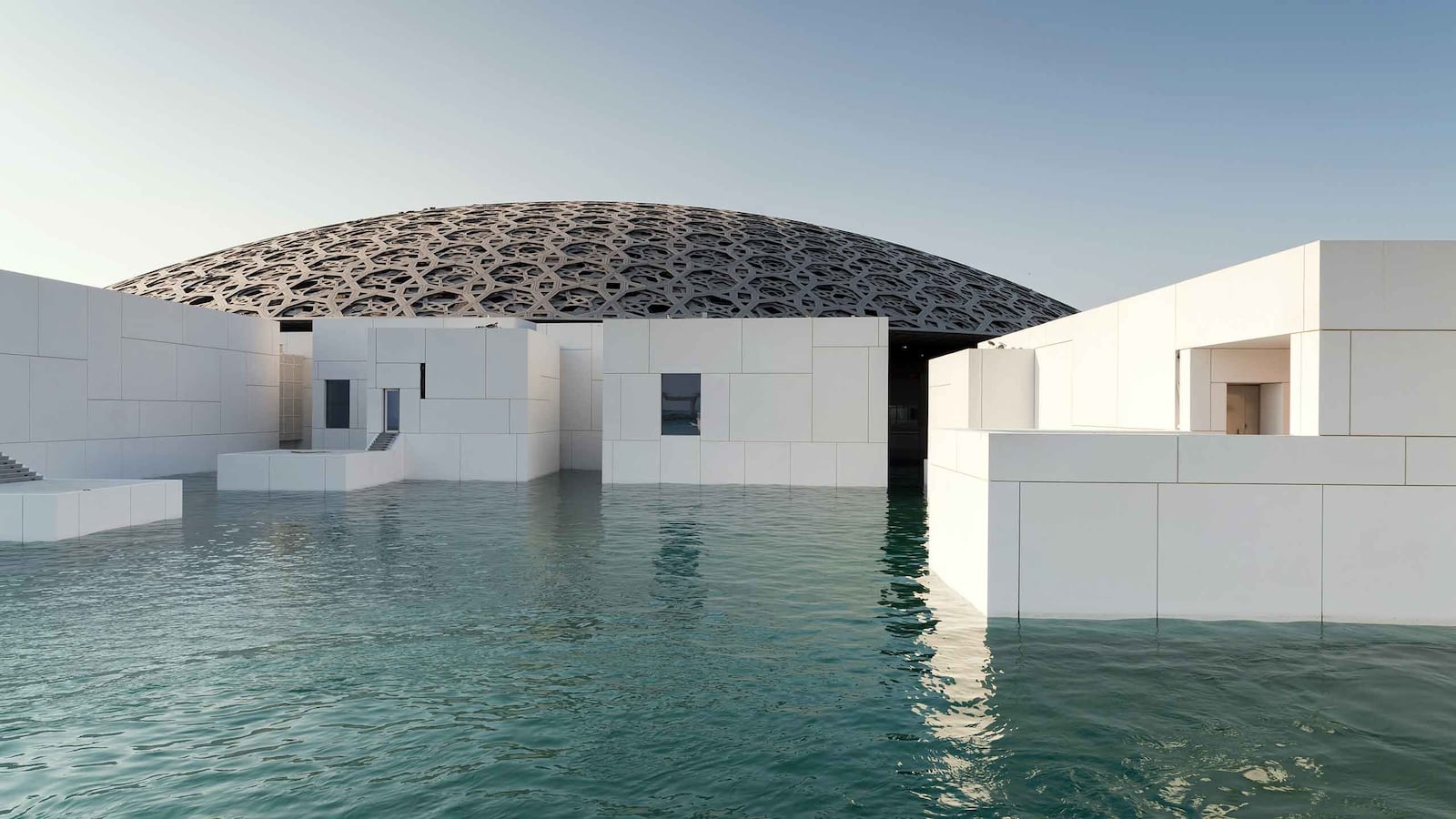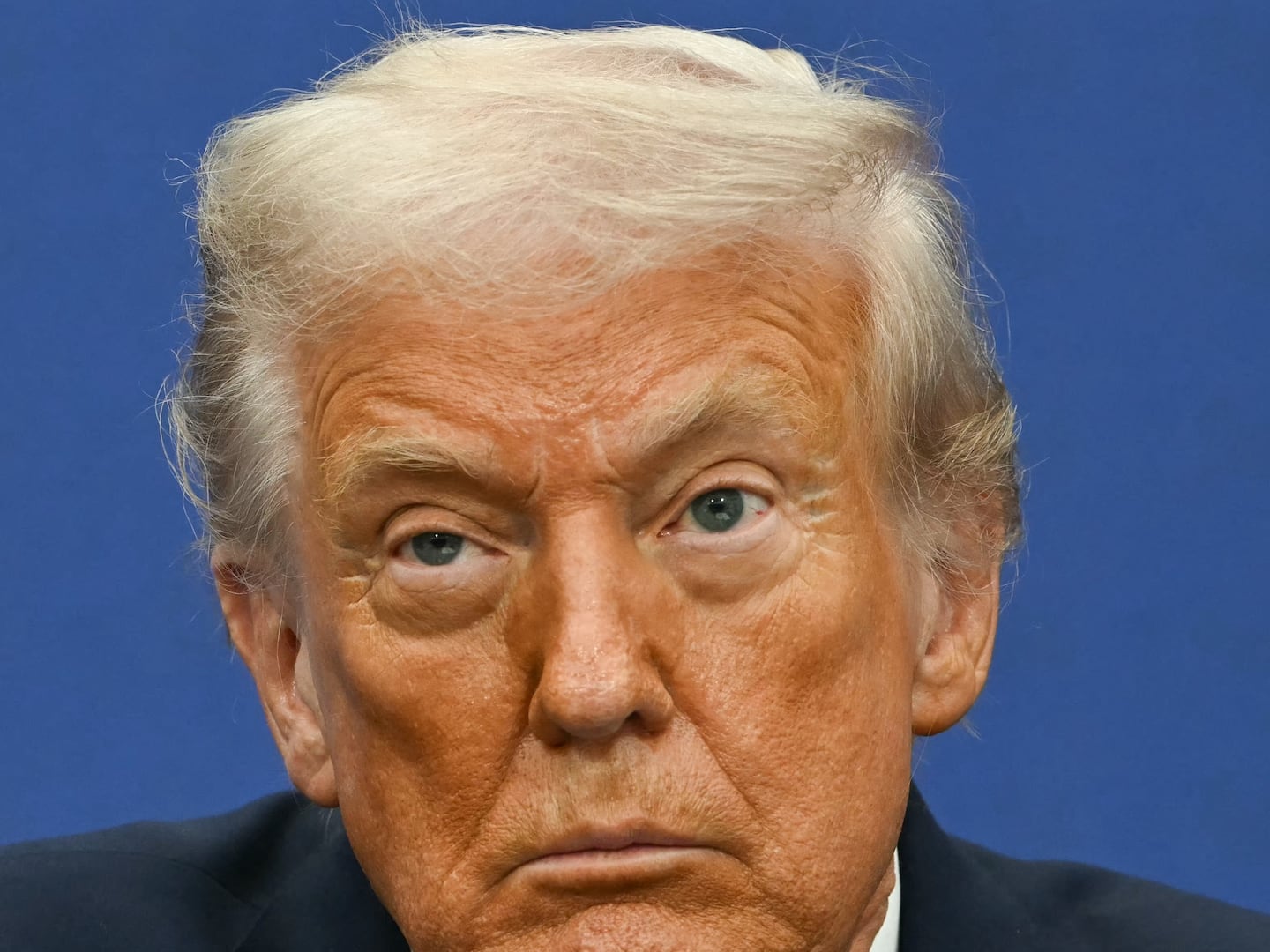The Louvre Abu Dhabi was conceived as part of a proud boast that the oil-rich Emirate had arrived. It finally opened to the public this weekend four years late, hundreds of millions of dollars over budget, and having shone an unwelcome spotlight on the Gulf states’ ruthless exploitation of immigrant laborers.
Hovering like a story-book UFO above the sandy plains of Abu Dhabi’s Saadiyat Island—a wash of sand reclaimed from the Arabian sea—the giant dome of the new Louvre Abu Dhabi has been designed to send a message to the world about the Arab Emirate’s perceived place in it.
This weekend, after a decade of false starts and missed targets, the Louvre Abu Dhabi, which enjoys the use of the venerable Parisian institution’s name, curators and even access to its works in a 30-year deal worth over $700 million to the French state, is finally throwing its doors open to the public.
There seems little doubt that regional residents and international visitors will flock to the new Louvre, attracted as much by the elegant ambition of the building’s French architect, Jean Nouvel, as the promise of viewing showstopping works by artists as diverse as Ai Weiwei, Jackson Pollock, Mark Rothko, Henri Matisse, and Vincent van Gogh.
But the opening of the Louvre is, perversely, calling attention to the horrendous abuses meted out to the migrant laborers (largely poor Indians) who do over 90 percent of construction work in the Middle East, and are routinely denied rights that would be considered a basic minimum in Western economies, as well as drawing fresh attention the big-picture failures and shortcomings of the Abu Dhabi government’s Saadiyat Island project.
Had things gone according to plan, it wouldn’t just be the latticed cupola of the Louvre nestling under the bright blue Arabian sky this weekend.

For Saadiyat Island was conceived as a dazzling global cultural center; first planned in the great oil boom of 2004-2007, the concept included not just the new Louvre but also a franchise of the Guggenheim to be designed by Frank Gehry, the Sheikh Zayed National Museum by Norman Foster, in the shape of a racing falcon’s wing (in honor of the founding sheikh’s favorite pastime); a maritime museum by Japanese starchitect Tadao Ando rising out of the sea; and a performing arts centre by the late Zaha Hadid, resembling nothing so much as a tangle of snakes.
“The project was conceived amidst the hubris of the oil boom when Abu Dhabi in particular, which controls over 90 percent of the UAE oil, was awash with money,” said one source. “It was all part of their very sensible planning for the post-oil future. But they didn’t expect the Arab Spring or the collapse in oil prices that have crippled their economy since then.”
The other galleries, signed off in 2008, were all supposed to have been finished by 2013. None have yet broken ground, although a 40-acre campus of New York University, which is also part of the island’s master plan, was completed in 2014 and is a huge success with several applicants for each available space.
Many suspect the other projects are stalled indefinitely, but the Abu Dhabi government continues to insist they will be completed eventually.
Abu Dhabi doesn’t do failure, as befits a state that just 60 years ago was a 26,000-square-mile expanse of desert populated by Bedouin tribes, who subsisted on subsistence trading, pearl diving, and pirating.
The country has come a miraculous distance in very little time by any standards, and criticizing its ambition to build a dazzling global arts center is perceived by some as sheer begrudgery.
“They are spending phenomenal money which is always a good thing for the art world, and any attempt to increase tolerance among the ISIS-boys should be applauded,” one London gallerist told The Daily Beast.
A more politically sensitive version of this argument is made by the governments and institutions connected to the project.
Although the Louvre Abu Dhabi did not respond to a request to talk to The Daily Beast, there are plenty of noble sentiments of this kind on public record. The most recent came from Emmanuel Macron, the French president who attended the opening ceremony this week.
He described the new museum, which holds art and items related to history and religion from around the world as a “bridge between civilizations.”
Shaikh Mohammad Bin Rashid summed up the official Abu Dhabi philosophy in his speech, saying: “The Louvre Abu Dhabi is our cultural pride—it will bring together the East and West and represents our ability to fight darkness with light; fight ignorance and intellectual extremism with artistic beauty. The key message of the Louvre Abu Dhabi is that our strength as human beings lies in the convergence of minds and the meeting of people and the alliance of civilizations.”
The nobility of that end has not stopped many, however, criticizing the means that went onto its creation; specifically the often dreadful treatment of the army of immigrant laborers who built the NYU campus and the new Louvre.
The most powerful critics of labor practices on Saadiyat Island have been the international non-governmental organization Human Rights Watch.
A 2015 Human Rights Watch report found that, despite the construction of a clinical and clean workers’ village, many laborers on the Louvre project were still being kept in conditions akin to indentured servitude, forced to work for months without pay until their illegal recruitment fees were repaid, and subject to summary arrest and deportation if they complained.
A spokesperson for HRW was not able to speak to The Daily Beast.
There has also been a series of protests at the treatment of laborers by artists themselves, who formed the pressure group Gulf Labor to lobby for better working conditions for the laborers.
Requests for official comment from a spokesperson for the group went unanswered, but Gulf Labor activists have been vocally protesting the issue for many years. Their message is similar to that of Human Rights Watch, even if their methods—happenings staged on the steps of Venetian opera houses, projections on art gallery walls—have been more dramatic.
They issued a fiery response after Jean Nouvel told a Guardian reporter in October that the treatment of workers was an “old question,” describing his comments as “dismissive of the widespread concerns about working conditions on Saadiyat Island.”
Nouvel has been quoted as saying, “We saw the places where the workers live, and their conditions to check that it was correctly done… We checked and it was fine. We saw no problem.”
But Gulf Labor have accused Nouvel of simply taking “the PR talking points of Abu Dhabi authorities as facts” saying they were “a falsification of the real condition of the workers who built the Louvre and continue to toil on Saadiyat Island.”
Critics concede, however, that conditions in Abu Dhabi have improved markedly (outdoor work is now banned around the searing mid day hours for example) and are better than conditions in neighboring Qatar.
Since December 2010, when Qatar won its bid to host the 2020 World Cup, more than 700 Indian migrant workers have died in that country, according to a shocking 2014 investigation by The Guardian.
However many art-world observers remain deeply uneasy at the perceived violations of the basic contracts of humanity that the construction of the Louvre Abu Dhabi apparently demanded.
The Dublin gallerist Oliver Sears said: “It’s an Arab dictatorship built on slave labor. The argument is that democracy moves slowly and that by cultural exchange you allow the process to happen. In this case it’s a simple exchange: Art for money. I am uneasy. Personally, I choose not to do business with these regimes.”
But what of the argument that any investment in art is welcome?
“It’s better spent on art than arms but that doesn’t mean it’s good. I think there is a hierarchy in society and spending this kind of money on a museum when many basic needs are lacking is immoral.
“The question is: What is the motivation of the government in Abu Dhabi to build this museum? I think it’s to show the West that they have a stake in Western values in order to be accepted as serious financial players. It’s a giant hedge for when the oil runs out.”






